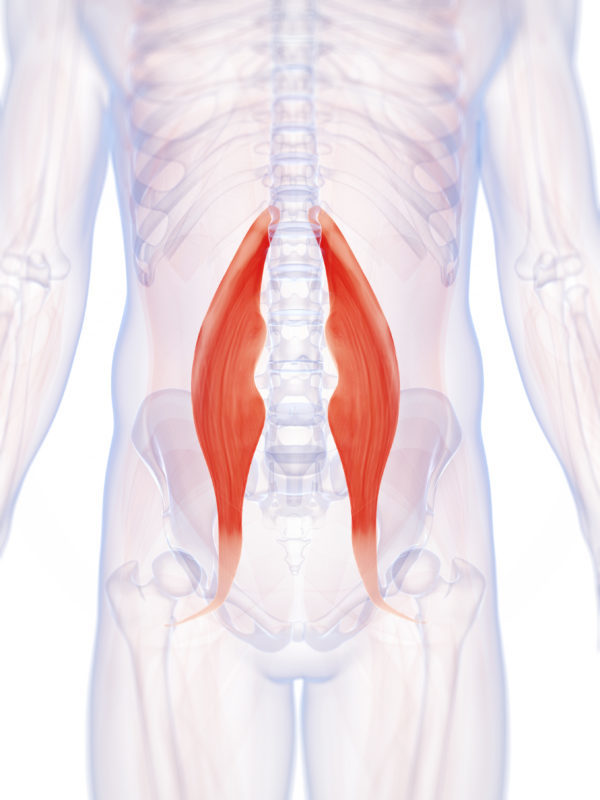I was running today on the treadmill as it’s pouring outside. As I ran, I was thinking about the action of my leg as it lifts up towards my body during my stride. Up with the right, up with the left. The rhythmic back and forth as I stared at my reflection on the screen in front of me (I absolutely can’t watch TV while I run) lulled me into the meditation of running. I started to picture my psoas muscle and its connection to my femur from my lower back and its job to lift my thigh up towards my abdomen with every contraction (see muscle below).

Focusing in this way on my anatomy helped me create more power in my stride and helped me to put my focus on where the action is, rather than thinking about, let’s say, my shoulders or my hips.
This is one way of using visualization during running. We can use it also during yoga and indeed the thoughts we bring TO the mat are even more (or at least are just as) important than the thoughts we have WHILE practicing. For instance, if I come to the mat with thoughts of building a ton of flexibility and I’m not well versed in anatomy, I might push myself in every pose; I might take every opportunity to take a bind or I might straighten my legs aggressively in every Downward Dog, fueled by my interest in lengthening my hamstrings.
If I, as a teacher, think that the main goal of yoga is to build flexibility, I might select postures and variations that take students well beyond healthy range of motion (which I’d determine in part, by watching them while teaching) fueled by my eagerness to bring them hidden range not yet found through a more moderate approach to practice.
I got to thinking about this idea when I listened for the second time to a recent podcast interview of clinical anatomist John Sharkey by host Brooke Thomas of The Liberated Body Podcast . He was describing his work in bringing research results to what we currently know about stretching and how he and his colleagues have found that there is more of a “gliding” relationship between tissues (muscle fibers, fascia) versus a “lengthening” that occurs between an origin and insertion of a muscle. He goes on to say in this excellent interview (read: anatomy geeks will love this podcast!) that he believes that understanding this new way of thinking about stretching can inform yoga teachers and practitioners about how to move on the mat and that in fact, better inform our goal (if we have a goal)  to be more focused on re-establishing normal range of motion rather than stretching ourselves to extreme degrees.
I found myself yelling, “Yes!” when I heard that. What a wonderful approach and mindset to bring to any movement practice. When we think about all the things we do all day which limit our range of motion (and think about it not only in terms of your muscles but your fascia), we have plenty of wonderful things we can do that might be considered more in the “conservative realm” Â but which can help our students restore normal range of motion! And, furthermore, for some students, restoring range of motion may mean building strength, if they are on the more hypermobile side of things.
What we think about our own practice and the thoughts we bring to the mat can effect our practice itself. If we feel like we need to punish ourselves for unhealthy habits around eating or feel that we don’t have the body we want to have, we might practice in a way that is fueled by this anger. If, on the other hand, we look at our practice as a way to build mindfulness and care for our bodies, we may approach the poses very differently.
As a teacher, if we want to help our students “stretch out” we may make very different choices around the poses we offer. If we want to help them transition in a gradual way to more challenging poses and help them restore range of motion, the words we pick, the cues we use, the sequences we offer and the poses we offer may be different.
If you enjoy learning about anatomy and live in or near Boston, come to my October 15th workshop on the anatomy of the shoulder. You can sign up here.
Comments or questions? Please let me know.
Oh, and one more thing:
If you’re a yoga teacher and you love anatomy but always find the business side of things eludes you, download my Teacher’s Toolbox here for worksheets to help organize your week and business:
